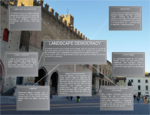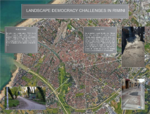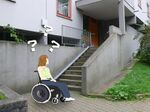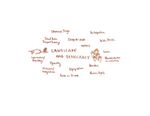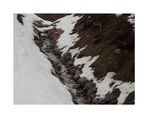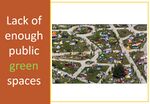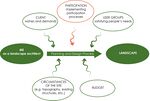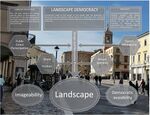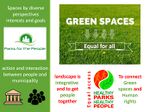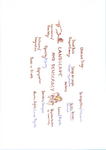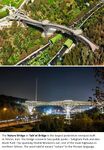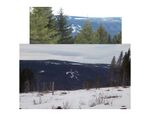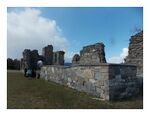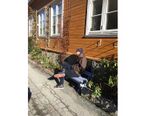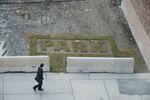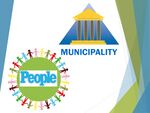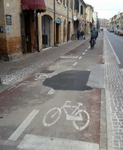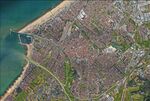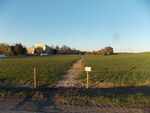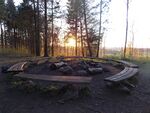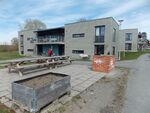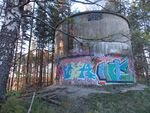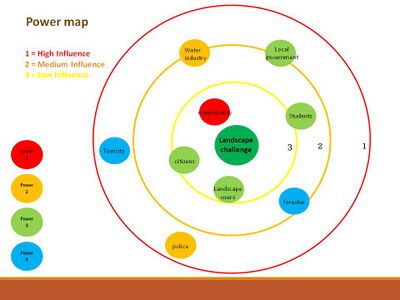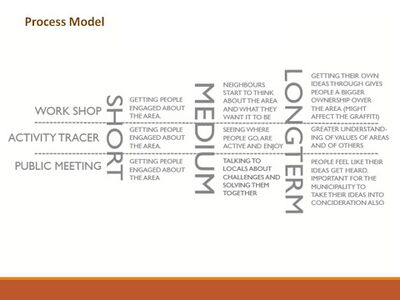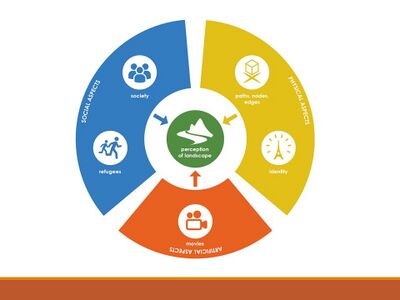LED Online Seminar 2017 - Working Group 9
--> Back to working group overview
Dear working group members. This is your group page and you will be completing the template gradually as we move through the seminar. Good luck and enjoy your collaboration!
Assignment 1 - Reading and Synthesizing Core Terminology
Step 1: Your Landscape Democracy Manifestoes
Step 2: Define your readings
A: Landscape Concepts
- Lynch, Kevin. (1960): The Image of the City, Cambridge, Mass.: MIT Press (Luca)
B: Concepts of Participation
- Gaventa, John: The Powerful, the Powerless, and the Experts (Florian)
C: Community and Identity
- Welk Von Mossner, Alexa (2014): Cinematic Landscapes, In: Topos, No. 88, 2014. (Negar Rezaei Azghandi)
D: Designing
- Salgado, Mariana, et al. (2015): Designing with Immigrants (Malene)
Steps 3 and 4: Concepts Selection and definition
Florian Matthies
- The Knowledge Society [Gaventa, John: The Powerful, the Powerless, and the Experts]
- Society has shiftet from an industrial one to a "knowledge society". Nowadays the knowledge producing industries like education, reasearch, development, media and communication are the most important ones. Scientific expertise is of a higher value than experience. Thereby people are disadvantaged and more powerless by having less scientific knowledge.
- Research with The People [Gaventa, John: The Powerful, the Powerless, and the Experts]
- To narrow the gap of knowledge in society, professionals need to research with the people. Thereby socially powerless groups can get into action. The researcher (the expert) starts with questions risen by the powerless groups and gives them back comprehensive information.
- Towards a Knowledge Democracy [Gaventa, John: The Powerful, the Powerless, and the Experts]
- The economic production is controlled by a few people of dominant knowledge. This needs to be changed to realize a real political democracy.
Negar Rezaei Azghandi
- [Welk Von Mossner, Alexa (2014): Cinematic Landscapes, In: Topos, No. 88, 2014]
- Exposing the landscape crisis for the society and people through the movies, because sometimes the natural environment are interfered by the human.
- [Welk Von Mossner, Alexa (2014): Cinematic Landscapes, In: Topos, No. 88, 2014]
- Utilization of real landscape in making a movie as a cinematic landscape. Because, Cinematic landscape is often the result of all kinds of trickery.
- [Welk Von Mossner, Alexa (2014): Cinematic Landscapes, In: Topos, No. 88, 2014]
- Importance of authenticity of landscape especially for making films when it plays an important role and also using the landscape as a kind of mirror of feelings.
Luca Maresi
- Imageability [Lynch, Kevin. (1960): The Image of the City, Cambridge, Mass.: MIT Press]
- It's the "quality in a physical object wich gives it a high probaility of evoking a strong image in any given observer" that it's essential to the city's buildings in order to create a link of affinity in the two way process between the inhabitant and the city itself.
- Equilibrium [Lynch, Kevin. (1960): The Image of the City, Cambridge, Mass.: MIT Press]
- To be percevied as whole, organic and beautiful the city needs a correct interrelation between its elements, paths, edges, districts, nodes and landmarks avoioding the over-concentration of elements in different areas that tear apart the urban fabric and create inequalities.
- Direct Analysis [Lynch, Kevin. (1960): The Image of the City, Cambridge, Mass.: MIT Press]
- The analysis of the esxisting is essential and a good starting point of every consideration but most of all, expecially facing different realities, the contact with the people who live everyday those cities is vital to have a complete scheme of inner and esternal views.
Malene Øien Eiksund
- [Salgado, Mariana, et al. (2015): Designing with Immigrants]
- If we consider design a question of “problem-defining” rather than “problem solving” (Kalantidou & Fry, 2014, 5), including immigrants in participatory design processes is key to transformative actions capable of producing social change.
- [Salgado, Mariana, et al. (2015): Designing with Immigrants]
- Designing with immigrants is good because it is not language based, bud image based instead.
Step 5: Reflection
According to our readings we came to the conclusion, that landscape concepts can be seen through an either physical or social perspective. Landscape is a physical appearance in the first case. So "the quality of physical objects" is very relevant to the people. This creates a link of affinity between the residents and their city for example. Especially for cities the interrelation between its elements, paths, edges, districts, nodes and landmarks is important. They need to be balanced to maintain a good urban fabric. Analyzing these existing structures is essential of every consideration. Furthermore landscape is connected to social issues as well. One social aspect is the shifting society towards a "knowledge society" where science and education are very important. Another social aspect is the integration of immigrants which is because of the currently big flow of refugees of a high significance today. Landscape can be experienced in movies as well. Often this is a cinematic landscape which is not real. Landscape can also function as a mirror of feelings in movies. Landscape concepts can be very different. To understand landscape every aspect has to be taken into account.
Step 6: Revised manifestoes
Assignment 2 - Your Landscape Symbols
Negar Rezaei Azghandi
Luca Maresi
Florian Matthies
Malene Eiksund
This man is cut out in the mountain of the city of Lillehammer in Norway. The city was the place of the winter Olympics in 1994 and the man is carrying the olympic fire. In the old Greece fire symbolised a connection with the Gods.The Olympic games and sports was a way that man could be close to the Gods.
This is the riuns of a monastary located on an island called Tautra in the middle of Norway. The ruins are well visited and symbolises the old history and traditions especially for handcrafts like beer making and soap making. These traditions are followed on by the people living at the island today.
Assignment 3 - Role Play on Landscape Democracy "movers and shakers"
- Florian Matthies: Klaus Overmeyer (Urban Catalyst Studio)
- Negar Rezaei Azghandi: Henry Sanoff (Planning Games)
- Malene Øien Eiksund: Karl Linn (UC Berkeley, Community Gardens)
- Luca Maresi: Paula Horrigan (Cornell University; Rust to Green project)
Assignment 4 - Your Landscape Democracy Challenge
Negar Rezaei Azghandi
- Give a title to your challenge
Your references:
- Own research
Florian Matthies
- Give a title to your challenge
Your references:
- Graphic reference: own research
Luca Maresi
- A Cycle Path for Everyone
Your references:
- Graphic reference: own research and pictures.
Malene Øien Eiksund
- Who uses, ownes and who restores? I chose four examples from my neighbourhood to examplify this democratic challenge of responsibility
(2) The second picture is of a fire place in the woods close to my school. It is used by a lor of people and is shared. But who fixes and restores the place. Is it the people who own the woods, the municipality or is the people who uses it? What are the issues/conflicts? The issue in all of these cases is who uses them, who ownes them and who restores them.
(4) This fourth picture is of a wather tower in the forest close to my house. The tower is the property of the municipality, but locals have used graffiti on the walls illegally. Who is here in charge of restoring it, is it the municipality or the people who painted it illegally? Or is the municiplaity okay with the graffiti? Who are the actors? The actors in these cases are the owners of the properties, the ones who are using the area or renting, and the municipality.
Your references:
- Pictures by me
Assignment 5 - Your Democratic Change Process
Your Democratic Change Process
- Fire place & Water tank tower
Reflection
The theoretical frame of the seminar gave us not only the basics and methods of how to accomplish the challenge but most of all it guided the way of look at this kind of problems. Actually the democratic method can be seen not only in the prevision of including the population in this future project but also in the way we discussed in the group sharing ideas and creating common points to give everyone a voice, not with a singleminded leader but with occasional spoesperson. After this we looked at the task in a different way recognising the “Imageability” of the landscape chosen, the way it is percevied by the people living by it, and so working with the intention not necessarely to change the nature of the land but most of all the way it is perceived and utilized in order make it a common ground itself.
Your references
- Graphic reference: own research
- Lectures
